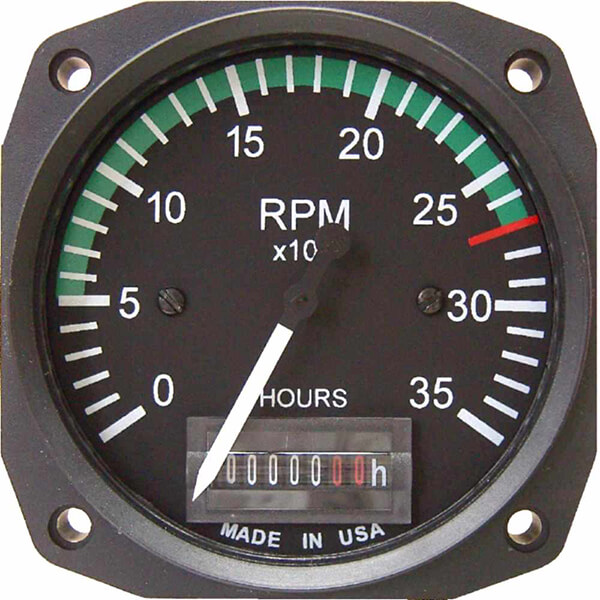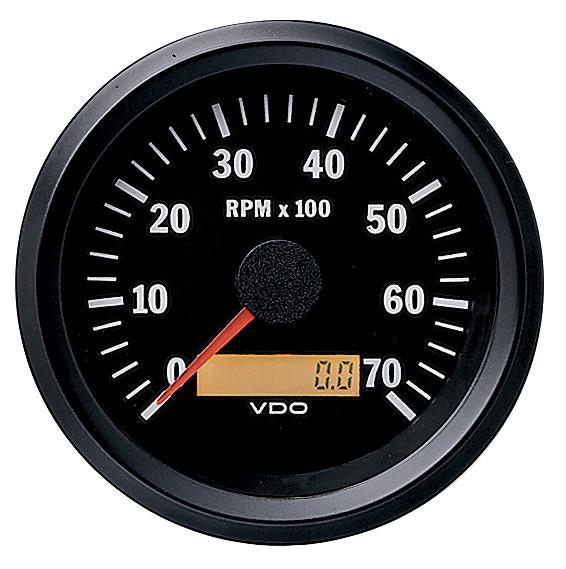How to Pick the Right Tachometer for Your Cars And Truck or Motorbike
Wiki Article
The Significance of a Tachometer in Keeping Track Of Engine Rate and Performance in Automotive Applications
In the realm of automotive engineering, the tachometer stands as a pivotal instrument in the motorist's arsenal, giving a direct window into the inner workings of an automobile's engine. Past its feature as a simple gauge of transformations per minute (RPM), the tachometer functions as an essential device for fanatics and experts alike, supplying real-time insights into engine performance and health. Recognizing the significance of this gadget surpasses surface-level monitorings, delving right into the elaborate partnership between engine rate, power output, and general driving experience. As we explore the diverse function of the tachometer in automobile applications, a much deeper gratitude for its influence on vehicle dynamics and performance starts to emerge.Relevance of Keeping An Eye On Engine RPM
Keeping an eye on engine RPM, or transformations per minute, is a vital aspect of automobile upkeep and performance evaluation. Engine RPM straight correlates with the speed at which the engine's crankshaft revolves, showing just how promptly the engine is running - tachometer. By keeping track of RPM, mechanics can evaluate the health and wellness of the engine, identify prospective issues, and fine-tune efficiency. An irregular RPM reading may signify issues such as engine misfires, defective spark plugs, or problems with the gas distribution system. Regularly high RPM readings might indicate hostile driving routines or the requirement for a higher gear change to improve fuel effectiveness.In addition, keeping an eye on engine RPM is crucial for performance analysis in racing and high-performance cars. In summary, checking engine RPM is not just vital for detecting problems yet likewise for optimizing engine performance in different vehicle applications.

Advantages of Real-Time Data
In vehicle applications, real-time data plays a critical function in providing instant insights into the efficiency and condition of the car. By constantly keeping track of numerous parameters such as engine speed, temperature, fuel consumption, and more, real-time data supplies numerous advantages that contribute to enhanced efficiency and safety when driving.
Additionally, real-time data facilitates efficiency optimization by offering immediate feedback on driving habits and engine performance. Drivers can change their behavior in real-time based on this details to accomplish far better fuel economy and extend the life-span of their automobile.

In addition, real-time information plays an important function in modern-day automotive diagnostics, allowing technicians to quickly identify and resolve breakdowns. This results in lowered downtime, lower maintenance prices, and eventually, enhanced total vehicle reliability and long life (tachometer). By harnessing the discover here power of real-time information, automotive stakeholders can make educated decisions that positively influence both the performance and durability of the car
Effect On Gear Shifts
The tachometer plays a vital duty in maximizing gear shifts by supplying real-time engine speed data to the motorist. When coming close to the look at this website redline on the tachometer, it signals the motorist to upshift to prevent over-revving the engine and creating potential damage.In addition, the tachometer aids in accomplishing smoother gear changes, especially in hand-operated transmissions. By keeping an eye on engine rate, drivers can implement equipment shifts at the optimal RPM variety, minimizing snagging motions and lessening wear on the transmission parts. This accuracy in gear adjustments not just boosts driving comfort but likewise contributes to fuel performance.
Enhancing Fuel Performance
Given the important function the tachometer plays in maximizing gear changes for performance and engine health and wellness, it straight contributes to making the most of gas efficiency in automotive applications. By giving real-time responses on engine speed, the tachometer assists vehicle drivers in keeping the most efficient RPM variety for fuel economic situation. When drivers regularly keep an eye on the tachometer and readjust their driving practices as necessary, they can avoid unnecessary fuel consumption triggered by over-revving or hauling the engine.In addition, the tachometer assists chauffeurs identify one of the most fuel-efficient equipment to be in at any provided moment, protecting against the engine from functioning more difficult than essential. This is especially critical throughout velocity and travelling, where being in the right gear can substantially influence browse around this site gas performance. In addition, the tachometer can notify drivers to possible mechanical issues that can be negatively impacting gas economic situation, such as a slipping clutch or a clogged air filter. In conclusion, the tachometer offers as an important device in improving gas efficiency by promoting ideal driving behaviors and recognizing locations for renovation in the vehicle's efficiency.

Making The Most Of Engine Long Life
The tachometer's duty in keeping track of engine speed and efficiency is important in making certain the longevity of automobile engines. By using the tachometer efficiently, motorists can enhance engine longevity with mindful RPM monitoring. Continually revving an engine too expensive can bring about too much deterioration on critical components, such as the pistons, shutoffs, and bearings. Over time, this can result in reduced engine performance and potential breakdowns. Keeping track of the tachometer allows chauffeurs to remain within the suggested RPM array for their vehicle, stopping unnecessary strain on the engine and prolonging its life-span.
Final Thought
Finally, the tachometer plays an essential duty in checking engine speed and efficiency in automotive applications. By providing real-time data on RPM, it permits reliable equipment changes, improved fuel efficiency, and optimized engine durability. This device is essential for preserving ideal engine performance and ensuring the general capability of a vehicle.Report this wiki page